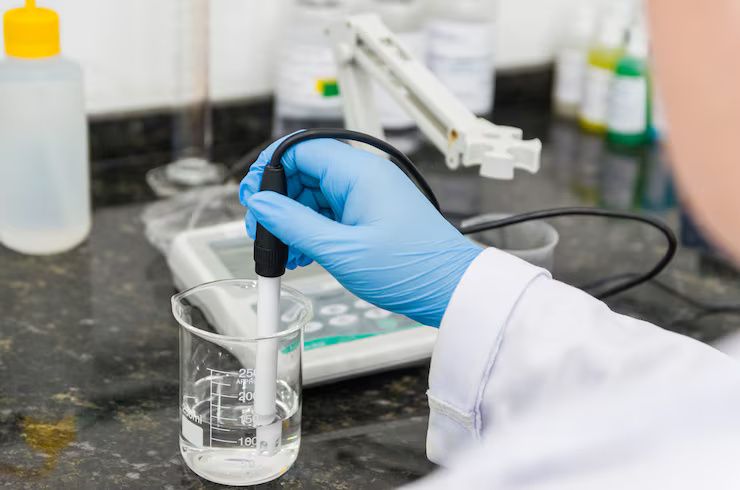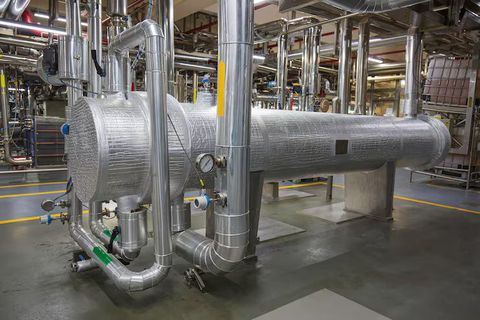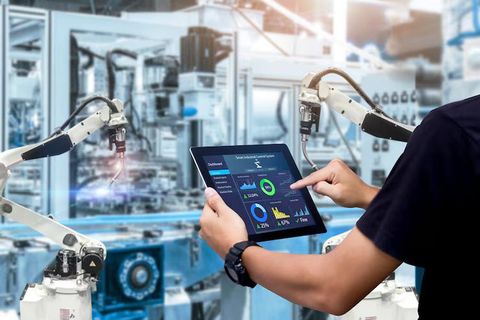Water Testing Equipment Overview 2025: A Detailed Guide to Lab Kits, Portable Tools & Industrial Analysis Systems
Water testing equipment plays a fundamental role in ensuring safe, clean, and reliable water across residential, commercial, industrial, and environmental sectors. These tools exist to detect physical, chemical, and biological properties such as pH, turbidity, hardness, dissolved oxygen, heavy metals, and microbial contamination.
The need for accurate water quality analysis arises because natural and treated water can contain pollutants, minerals, or microorganisms that affect human health, industrial processes, and ecological balance. Water testing equipment ranges from basic lab kits used in schools and field research environments to advanced industrial analyzers designed for continuous monitoring.
In 2025, water quality monitoring has become more technology-driven, connecting sensors, automated testing systems, and digital reporting tools to support faster decision-making and regulatory compliance.

Importance
Water quality monitoring matters today more than ever due to multiple global challenges.
-
Public health protection: Ensures drinking water is safe and free from contaminants such as bacteria, nitrates, or heavy metals.
-
Environmental conservation: Supports ecological monitoring in lakes, rivers, groundwater, and marine environments.
-
Industrial reliability: Many industries—including food processing, pharmaceuticals, energy, and agriculture—depend on water within specific quality parameters.
-
Infrastructure management: Municipal water authorities rely on continuous testing to maintain safe supply and prevent contamination events.
-
Sustainable resource use: Monitoring water quality helps detect pollution early and supports long-term water conservation efforts.
Water testing equipment helps solve problems related to contamination, regulatory compliance, and operational efficiency. It benefits scientists, environmental agencies, industrial operators, municipalities, and everyday individuals who want to ensure clean water for daily use.
Recent Updates
The past year (2024–2025) has introduced new developments that are reshaping water testing practices:
-
AI-enabled water analyzers (2025): Systems now use artificial intelligence for trend prediction and automated alerts when water quality deviates from safe thresholds.
-
Portable multi-parameter meters (2024): New handheld devices can analyze pH, conductivity, and dissolved oxygen simultaneously, improving field testing efficiency.
-
Micro-sensor advancement (2025): Ultra-small sensors capable of detecting contaminants at very low concentrations are increasingly used in environmental research.
-
Cloud-connected monitoring platforms (2024): Many industrial water systems now incorporate cloud dashboards for real-time analytics and historical data tracking.
-
Growth in PFAS detection technology (2025): As PFAS (“forever chemicals”) gain global attention, more testing systems are being updated to detect these substances accurately.
-
Rapid microbial testing kits (2024): Faster testing technologies now detect E. coli and coliform bacteria within hours rather than days.
These innovations reflect growing global concern about water security and the increased demand for precise, automated, and user-friendly testing tools.
Laws or Policies
Water testing is heavily influenced by regulations created to protect public health and environmental safety. Although specific rules vary by region, the following frameworks are widely recognized:
-
EPA Water Quality Standards (United States): Establishes national guidelines for drinking water, wastewater, and environmental monitoring.
-
WHO Water Quality Guidelines: Global recommendations used by many countries to develop national standards.
-
European Union Water Framework Directive: Requires member states to regularly assess and report on water quality across rivers, lakes, and coastal waters.
-
Industrial discharge regulations: Many countries regulate wastewater from factories and industrial facilities, requiring accurate monitoring using approved equipment.
-
Municipal water testing mandates: Local authorities must test drinking water regularly for contaminants, leading to increased deployment of certified lab and field analyzers.
In 2025, many countries have updated rules related to chemical contaminants such as PFAS, nitrate levels, and microplastics, which directly shapes the demand for more advanced testing technologies.
Tools and Resources
Several helpful tools and resources make water quality monitoring more accessible and efficient:
-
Water quality index calculators: Online tools help interpret multiple parameters into a single water quality rating.
-
Mobile monitoring apps: Apps such as WaterTracker and AquaCheck connect with portable analyzers to display real-time readings.
-
Laboratory reference guides: Manuals for interpreting pH, turbidity, chemical oxygen demand (COD), and biological oxygen demand (BOD) results.
-
Government water safety portals: Provide updated regulations, testing schedules, and reporting guidelines.
-
Online training courses: Many universities and environmental organizations offer digital training on water testing procedures.
-
Data logging software: Industrial treatment plants use digital recordkeeping platforms for regulatory reporting and trend analysis.
These tools support accurate analysis for beginners, researchers, and professional operators.
Example Table: Comparison of Water Testing Equipment Types
| Equipment Type | Primary Use | Suitable For |
|---|---|---|
| Lab Chemical Test Kits | Basic chemical testing (pH, hardness) | Schools, fieldwork, home labs |
| Portable Multi-Parameter Meters | On-site testing of multiple indicators | Environmental surveys, field engineers |
| Industrial Analyzers | Continuous automated monitoring | Water treatment plants, factories |
| Microbial Test Kits | Detection of bacteria and pathogens | Municipal water, research labs |
| Spectrophotometers | High-precision chemical analysis | Laboratories, industrial settings |
FAQs
What are the most common parameters tested in water quality analysis?
Typical parameters include pH, turbidity, dissolved oxygen, temperature, conductivity, nitrates, heavy metals, and microbial contaminants such as coliform bacteria.
Are portable water testing kits accurate?
Portable kits are reliable for field testing when used correctly. However, laboratory instruments provide higher precision for advanced chemical and biological analysis.
Why do industrial facilities require continuous water monitoring?
Industries depend on consistent water quality for product safety, equipment protection, and compliance with environmental discharge regulations.
How often should water be tested?
It depends on the purpose. Drinking water is often tested regularly by municipal authorities, while industrial plants may require hourly or continuous monitoring.
What technology is advancing water testing in 2025?
Artificial intelligence, cloud-based monitoring, micro-sensors, rapid microbial detection, and portable multi-parameter analyzers are among the fastest-growing innovations.
Conclusion
Water testing equipment remains essential in ensuring safe, clean, and sustainable water resources. From household testing kits to high-precision industrial analyzers, these tools support global health, environmental protection, and efficient industrial operations.
In 2025, advancements in AI, automation, digital connectivity, and micro-sensing technology are shaping a more accurate and responsive water testing landscape. Regulations continue to push for higher standards of monitoring, especially related to chemical contaminants and ecological preservation.






